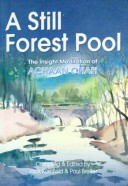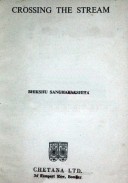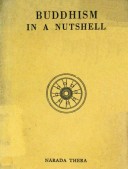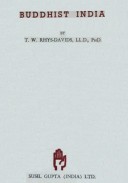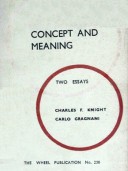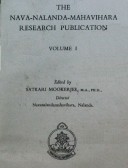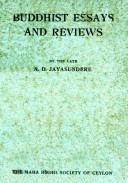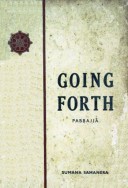Tìm Sách
Sách tiếng Anh-English >> A Still Forest Pool
Thông tin tra cứu
- Tên sách : A Still Forest Pool
- Tác giả : Achann Chah
- Dịch giả :
- Ngôn ngữ : Anh
- Số trang : 189
- Nhà xuất bản : The Theosophical Publishing House
- Năm xuất bản : 1985
- Phân loại : Sách tiếng Anh-English
- MCB : 12100000011624
- OPAC :
- Tóm tắt :
CONTENTS
Foreword,
Introduction
Understanding the Buddha’s Teachings
Correcting Our Views
Our Life is Our Practice
Meditation and Formal Practice
Lessons in the Forest
Questions for the Teacher
Realization
Glossary of Buddhist Terms
ACKNOWLEDGEMENTS
We wish to thank and acknowledge assistance from many friends and teachers, especially the Venerable Achaan Sumedho (currently abbot of the forest wat at Chithurst, England) and the Venerable Pabakaro Bhik- khu the bhikkhu sangha at Wat Ba Na Na Chat, in Ubol Thailand, who reviewed and offered suggestions for this manuscript; Andy Taido Cooper and Steve Ikko Bodian of the Zen Center of Los Angeles; and especially to Shirley Nicholson and the Theosophical Publishing House for their valuable support and editorial assistance.
Portions of “Questions for the Teacher” and “Glossary of Buddhist Terms” are from Living Buddhist Masters by Jack Komfield © 1977 and are reprinted by permission from Prajna Press, an imprint of Shambhala Publications, P.O. Box 308, Back Bay Annex, Boston, Mass., 02117. “A Monk’s Life” and “Not Self” are from the film The Mindful Way, produced and broadcast by the British Broadcasting Corp., London, England, and are used by permission.
FOREWORD
It is a pleasure to write this foreword to the book of my Dharma friend, Achaan Chah.
Our world is at a very interesting age. In the West, people are studying yoga, karate, meditation—Eastern things. In the East, people are studying science, business. Western art and philosophy—Western things. This is now the time when Yin and Yang are changing very quickly. So if you are holding on to any idea—of what is Eastern, what is Western, how things are, how things ought to be—holding any idea, any opinion at all, then you will have a problem; you cannot connect with this world. But, if you lay it all down, all your ideas, all opinions, then the truth is right in front of your eyes: the sky is blue, the tree is green, sugar is sweet, salt is salty. The dog is barking, woof I woof! The rooster is crowing, cockle-doodle-doo! Then, when you’re hungry, just eating, when you’re tired, just sleeping is possible. A hungry person comes, you can give him food. A thirsty person comes, you can give him something to drink. That’s all! That’s enough! That is Buddhism—nothing at all.
Achaan Chah says, “People are like buffalo—unless they are tied down firmly by all four legs, they will not allow themselves to be given any medicine… In the same way, most of us must be totally bound up in suffering before we will let go and give up our delusions. If we can still writhe away, we will not yet give in. A few people can understand the Dharma when they hear it taught and explained by a teacher. But life must teach most of us all the way to the end.” That is very wonderful speech, just correct!
Achaan Chah once walked by some students at the Insight Meditation Center who were doing slow walking meditation on the lawns. He remarked that the meditation center looked like a mental hospital for the diseases of the worldly mind. All afternoon, as he wandered past students, he would call out to them, “Get well soon. I hope you get well soon.” That is also very wonderful.
He says, “Hey, listen. There’s no one here, just this. No owner, no one to be old, to be young, to be good or bad, weak or strong… No one born and no one to die… When we carry a burden, it’s heavy. When there’s no one to carry it, there’s not a problem in the world.” That is the True Way.
Achaan Chah tells one good Zen story. “In the Zen koan of the flag in the wind, two persons are watching a flag: one says it is the wind that moves, the other says it is the flag. They can argue forever, take sticks and fight it out, all to no avail. It is the mind that moves.” That is correct. But very important, if there is no mind, then no problem. If you have mind, you have a problem. So where does mind come from? Who made that?
Great Master Achaan Chah has already given you the Great Way, Truth and Correct Life. I hope you find your true way from this book, get Enlightenment, save all beings from suffering.
Zen Master Seung Sahn
Providence Zen Center
INTRODUCTION
Suppose you were to go to Asia in the 1980s in search of living teachings of the Buddha, to discover if there are still monks and nuns practicing a life of simplicity and meditation, supported by alms-food, and dwelling in the forest. Perhaps you had read descriptions of the Buddha himself wandering with his monks in the forests of India, inviting men and women of good families to join him in cultivating wisdom and universal compassion, inviting them to live the simple life of a mendicant, to dedicate themselves to inner calm and awareness. Would you find this way of life alive today, twenty-five centuries later? And would its teachings still be applicable and relevant for our modem society, our modem minds?
You would land at a modem airport near Bangkok or Colombo or Rangoon. In your taxi you would drive through Asian city streets, passing cars, crowded busses, sidewalk vendors of tropical fruits. Every few blocks you would see the golden pagoda or spire of an urban Buddhist temple. But these are not the temples you have come to search for. They contain monks and nuns who study the ancient texts, who can chant and preach, and from this they teach. But to” find the simple life of dwelling in the forest, the meditative living with robe and bowl, as old as die Buddha himself, you would have to leave die cities and their temples far behind. If it were Thailand, the country with the greatest number of monasteries and monks, you would board the train at busy Hualampong station, leaving early in the morning for the provinces of the far south or northeast.
The first hour’s journey would take you clear of the urban sprawl, beyond the houses, businesses, and shanties backed up along the railway track. Vast plains of central Thailand would roll by, the green rice bowl of Southeast Asia. Mile after mile of paddy fields, checkerboarded into lots by small dikes between fields and rhythmically divided by canals and waterways. On the horizon of this sea of rice, every few miles in four or five directions you would see islands—dense clusters of palm and banana trees. If your train rolled close enough to one of these palm islands, you would see the glint of an orange-roofed monastery and cluster of wooden houses on stilts that make up a Southeast Asian village.
Every settled village, whether with five hundred or two thousand residents, has at least one monastery. It serves as the place for prayer, for ceremony, as the meeting hall, and for many years also served as the village school. Here is the place where most young men of the village will ordain at age twenty, for one year or three months, to learn enough of the ways of the Buddha to “ripen” into mature members of their society. The monastery is probably run by a few older, simple, and well-meaning monks who have studied some of the classic texts and know enough of ceremonies and of the basic teachings to serve as village priests. This monastery is an integral and beautiful part of village life, but it is not the temple you have come to search for.
Your train heads north toward the ancient capitol of Auddhaya, filled with the ruins of magnificent temples and broken palaces that were sacked centuries ago in the periodic wars with neighboring kingdoms. The spirit of these magnificent ruins remains in the enormous stone Buddhas, imperturbably weathering the centuries.
Now your train turns east for the long journey toward the Lao border, across the reaches of the Korat Plateau. Hour after hour the land passes. Still you see rice paddies and villages, but they gradually become sparser and poorer. The canals and lush gardens of Central Thai villages, mango trees, and tropical greenery turn into a simpler landscape.
Houses are smaller. Village monasteries still gleam, but they too are smaller and simpler. Here an older, more self-sufficient way of life is preserved. You can see women weaving handloomed blankets on their porches, while rice farmers work and children tend the water buffalo in wet gullies alongside the railroad tracks.
The rural countryside in these lesser developed provinces holds much of what remains of the tradition of forest monks and nuns. It still has regions of forest and jungle, small thickly covered mountains, and unsettled borderlands. And for many centuries it has supported forest monks and monasteries dedicated to the preservation and realization of the enlightenment of the Buddha. For the most part these monks do not function as village priests, nor do they teach school, nor study and preserve the language of the ancient written scriptures. Their intent is to live fully and realize in their own hearts and minds the insight and inner peace taught by the Buddha.
If you left the train and made your way by bus or hired car down some dirt road to such a monastery one of dozens in northeast Thailand, what would you find? Would the teachings and way of practice be relevant in the 1980s? Would the insight and awareness training address the needs of one coming from a modem and complex society?
You would discover that many Westerners had come before you. Since 1965 hundreds of Europeans and Americans like you have come to visit and learn in the forest. Some came to study for short periods and then returned home to integrate what they learned into their household life. Some came to train more thoroughly as monks for one, two, or more years and then return home. Another group found life in the forest to be a rich and compelling way to live, and these remain in monasteries to this day.
For each of these groups the teachings have spoken directly to their hearts and minds, offering them a wise and conscious way to live. At first the way may seem almost easy, deceptively simple. But upon attempting to put the Buddha’s way into practice, one discovers that it is not so easy. Yet, despite the effort it takes, these people feel that nothing could be more valuable than to discover the Dharma or truth in one’s own life.
From the moment of your entry into a forest monastery like Wat Ba Pong, the spirit of practice is evident. There is the stillness of trees rustling and the quiet movement of monks doing chores or mindful walking meditation. The whole monastery is spread over a hundred acres, divided into two sections for monks, and nuns. The simple unadorned cottages are individually nestled in small forest clearings so that there are trees and silent paths between them. In the central area of the Wat are the main teaching hall, dining area, and chapel for ordination. The whole forest setting supports the atmosphere of simplicity and renunciation. You feel that you have finally arrived.
The monks who live in those monasteries have chosen to follow this uncomplicated and disciplined way of practice called dhudanga. The tradition of forest monks who voluntarily choose to follow a more austere way of life dates back to the Buddha, who allowed a supplementary code of thirteen special precepts, limiting the robes, food, and dwellings of monks. At the heart of this life style are few possessions, much meditation, and a once-daily round of alms-food begging. This way of life spread with the rest of Buddhism into the thick forests of Burma. Thailand and Laos, places filled with caves and wild terrain, ideal for such intensive practice. These ascetic monks have traditionally been wanderers, living singly or in small groups, moving from one rural area to another, and using handmade cloth umbrella tents hung from trees as theữ temporary abode. Practical Dharma teachings from one of the greatest forest monasteries, Wat Ba Pong, and its master Achaan Chah have been translated and compiled and are offered to the West in this book.
Achaan Chah and his teachers, Achaan Tong Rath and Achaan Mun, themselves spent many years walking and meditating in these forests to develop their practice. From them and other forest teachers has come a legacy of immediate and powerful Dharma teachings, directed not toward ritual Buddhism or scholastic teaming, but toward those who wish to purify their hearts and vision by actually living the teachings of the Buddha.
 Facebook
Facebook
 Google
Google
 Google+
Google+
